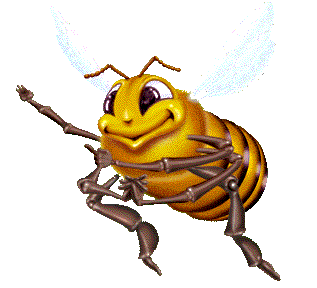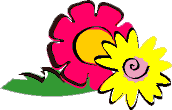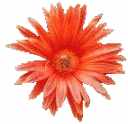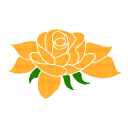
Buzz About?

 |
Buzz About? |
 |
 |
|
|
|
|
|
|
|
|
 |
 |
 |
 |
 |
 |
 |
 |
|
Get stung with bee facts! First Graders are all a buzz to learn more about bee's. Beekeeping can be for men, women and children. Beehives can be easily kept in large cities and in the country. However, before you decide to become a bee keeper, you should know all about why bees make honey, how they make honey, and the different jobs that each bee in the hive does. So, put on your bee suit and get ready to explore the wonderful world of bees.
 |
|
Task 1: tell how bees
make honey
Task 2: explain what each
bee's role is in the hive
Task 3: act out how bees talk
with each other
Task 4: draw pictures of things
needed when keeping bees
Task 5: make a crossword puzzle
with words about bees
Task 6: create a wanted poster
about a certain kind of bee
Task 7: illustrate the life
cycle of a bee
Task 8: label the parts of
the bee
Task 9: create a class fact
book about bees
 |
|
|
|
This site has information about how bees make honey. It is a one page description about the process of how bees make honey. Published from Lansing State Journal, July 30, 1997. |
|
|
This page contains information and pictures that show the process of taking honey off of the comb. This project is also created by Quick Learn Software. |
Task
2
role of the bee in the hive
|
|
This site gives a simple description about what each bee's role is in the hive. From National Honey Board. |
Task
3
bee
communication
|
|
This site tells about the kinds of dances that bees do, the decisions that are made by colonies, and feeding sights for bees. This page was created by the Communication and Recruitment to Food Sources by Apis mellifera. |
|
|
This site gives information about the bee dance. The words are difficult to read. This is taken from Zoogoer - November / December 1995. |
|
|
This site tells about several of the dances that they do and shows them doing the dances. Brought to you by Nova. |
Task
4
things
needed to keep bees
|
|
The beginning beekeeper will need hive equipment, beekeeping gear and bees before he can start his hobby. This page will tell you all you need to have to keep bees. This page is created by Capital Area Honeybee Stewards. |
Task
5
vocabulary
words about bees
|
|
This site gives vocabulary words and their meanings for each letter of the alphabet. Brought to you by the National Honey Board. |
|
|
This site is a tour of the hive where you can meet all of the bees in the hive and learn about what each bee does. This is created by the CC Pollen Co. |
Task
6
wanted
poster about one kind of bee
|
|
The queen bee and many of her other friends are located at this page. Each of these bees have facts and information that go with them. This page is from CC Pollen Co. |
Task
7
bee's life cycle
|
|
The information at this site tell about what each bee does and how long it lives. |
|
|
This book is in the classroom. |
Task
8
label
the parts of the bee
|
|
This site is a lesson plan site with a link to a bee that labels the body parts. From Capital Area Honeybee Stewards. |
|
|
This site gives information and shows the parts of the Honey Bee body. It also gives other information about bees. |
Task
9
make
an interesting bee fact book
|
|
This site contains facts about bees, honey trivia, honey history, honey glossary, recipes, and honey games. It is brought to you by the National Honey Board. |
|
|
This site contains an animated tour through a bee hive. It allows you to meet all of the bees in the hive. This site was created by C C Pollen Co. |
 |
Web Sites with Teacher Information
 |
|
Task 1: Students will tell how bees make
honey.
Step 1. Students will look at resource sites
with a partner.
Step 2. Students can take notes, draw pictures,
or write sentences about how bees make honey.
Step 3. Partners will orally share with
the class their findings on how bees make honey.
Materials:
Materials:
Task 4: Draw pictures of things are needed
when keeping bees.
Step 1. Students will look at the resource
sites in pairs.
Step 2. Students will draw pictures of the
objects needed to raise bees.
Step 3. Each pair will need to hand in their
drawings.
Materials:
Materials:
Materials:
Materials:
Materials:
Materials:
 |
|
This rubric can be used for all nine tasks.
The rubric is a scale from one to four. Four being the student's
best work and one being least amount of work done. Each point value
to be determined by teacher and discussed with students at the beginning
of the unit.
| 4 - Extra Effort
You have exceeded expectations. |
| 3 - You Got It
You have met the standard. |
| 2 - Keep Working
You need more practice. |
| 1 - Not Yet
You did not understand how to do the assignment. You did not try to do the assignment. |
 |
|
Now that you have buzzed through the wonderful world of bees you have become a "bee" expert. You have learned how bees make honey, the role that each bee has in the hive, how bees communicate with each other, the equipment that is needed to keep bees, bee vocabulary, life cycle of a bee, the parts of a bee, and other interesting bee facts. Hopefully, you have enjoyed your tour of the hive.
 |
This page was created
by Jennifer Bohnsack
1st grade teacher,
Geil Elementary.
For questions or comments
please e-mail me.
Last updated: April 2001.
This page was adapted by Patty Sinkler from Bernie Dodge & Tom March's template